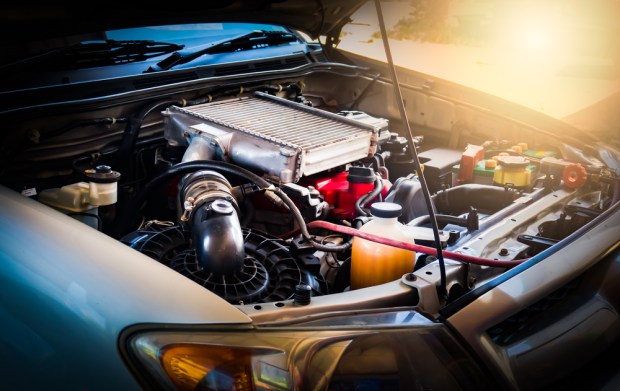Mobile Data, On Literal Wheels And In The Driver’s Seat

It’s mobile data (emphasis on the mobile) — as in data, wrought by and transferred across vehicles. All manner of data — from weather to payments, from cell towers to street lights — uses technology to measure whether other technologies are functioning as they should. Think of the car as the ultimate observer, passing by and passing judgement with speed (but under the speed limit).
To that end, Streamr, the Swiss blockchain startup, is in partnership with Hewlett Packard Enterprise (HPE), revving the motor towards data monetization — literally. Through the terms of the relationship, the two companies are linking automotive technology, HPE’s interface and Streamr’s Engine (an analytics engine), which features blockchain, to bring data to the latter’s Marketplace. The companies have said the combination marks a collaboration that will show how data can be monetized securely. The firms also noted that the partnership will solve challenges that are tied to smart cities, where real-time information about sensors is crucial.
Streamr offers up a single interface for data delivery and payment, and features a cryptographic token, known as DATA, a conduit to moving data between parties.
As for the mechanics of working with the vehicle itself, HPE will collect data from a communications “bus” in real time as it is delivered to the Streamr platform, with an eye for and digital reading of things like fuel consumption and vehicle location.
In a statement earlier this month, Raphael Davison, worldwide director for blockchain at HPE said, “Our main objective at HPE is accelerating time-to-value for our Enterprise Blockchain customers. We see Blockchain use cases evolving into what we call Blockchain 3.0: the intersection of Blockchain, IoT, Big Data, AI and the Intelligent Edge. Our partnership with companies like Streamr helps us bring this future closer to a reality.”
On Monday (May 14), the companies demonstrated the collaboration at Consensus New York, debuting with a 3D Audi Q2 chassis. In an interview from that same conference, Henri Pihkala, founder and CEO of Streamr, was joined by Jennifer Smith, head of blockchain marketing at HPE. The duo told Karen Webster that benefit would accrue to the end user, so to speak — the car owner, the driver.
It’s an eventuality that flips the traditional data model on its head, said Pihkala — where individuals have given their information for free to large tech players for decades, such as Google and Facebook.
The economic incentive for sharing the data may be readily apparent, said the CEO. Consider the example of two cars, similar in price and performance. For one model, the new owner can earn money for data, provided while driving. The data-sharing also benefits all manner of corporates on the receiving end of that real-time information, as it means they have insight that can improve the goods and services they provide. (Side note: Pihkala told Webster the data that flows across the platform and driver has nothing to do with advertising.)
“Think of connected cars as measurement devices,” Pihkala told Webster, devices that can measure their environments and produce data that ties into their immediate environs.
In another use case, a car can measure cell tower signal strength, or measure road conditions and find potholes in the ground. This would be of interest to the road authorities and city planners, said Pihkala and Smith.
As for data privacy, this is, of course, where blockchain comes into play — no matter what the data may be, whether about the vehicle’s environment or tethered to the driver’s personal data — and encryption safeguards the payload. “Blockchain adds a layer of trust,” said Smith. Pihkala agreed, saying, “The only trust you need is in mathematics and cryptography … instead of having to trust the corporation.”
Pihkala noted to Webster the initial monetization might be marginal. “It might be enough to offset the gas or electricity costs that come from driving the vehicle” as companies pay for data — but, done on a large enough scale, it might offset the cost of owning the car altogether.
